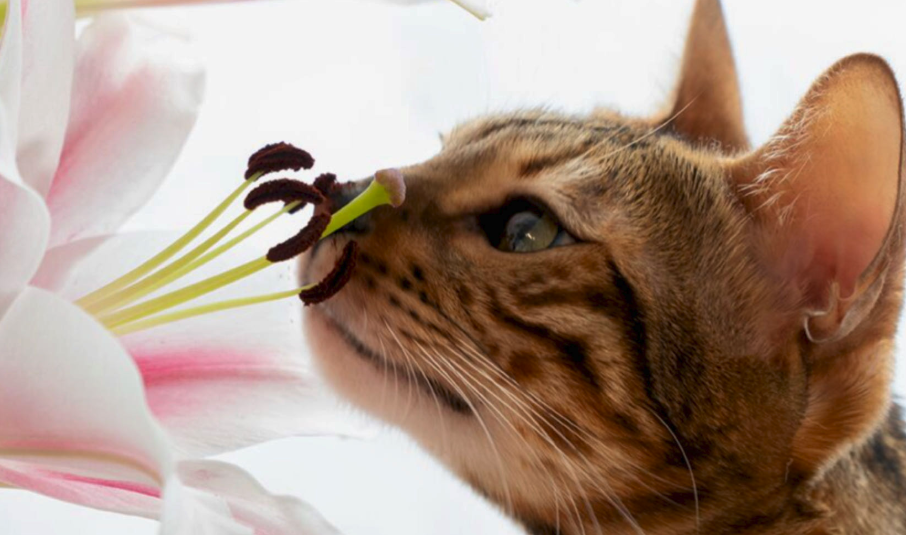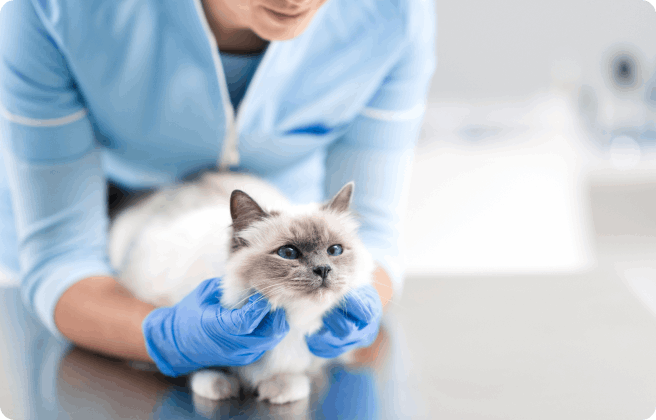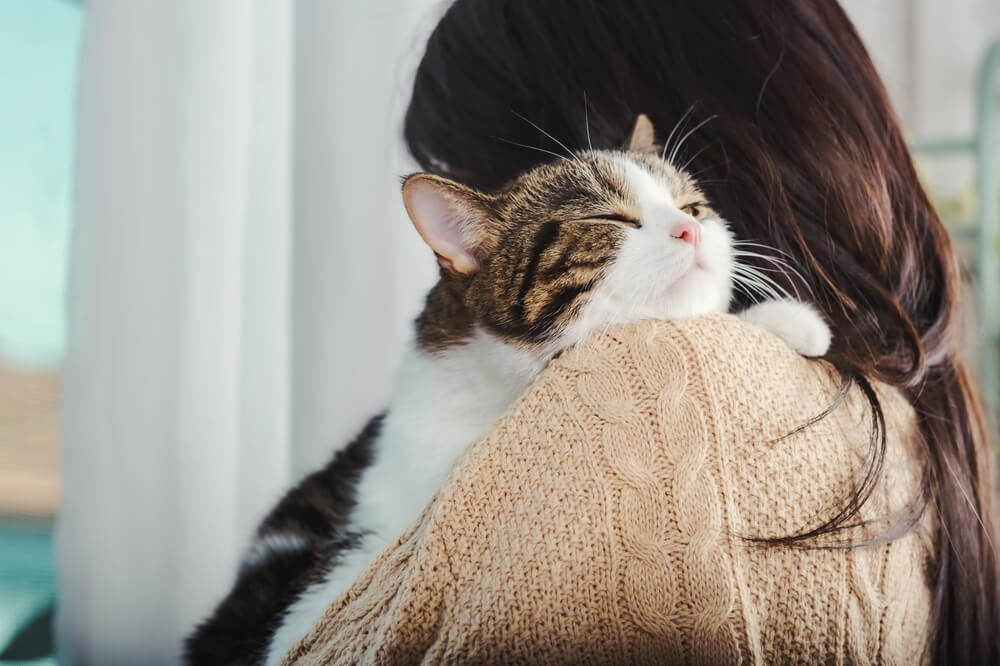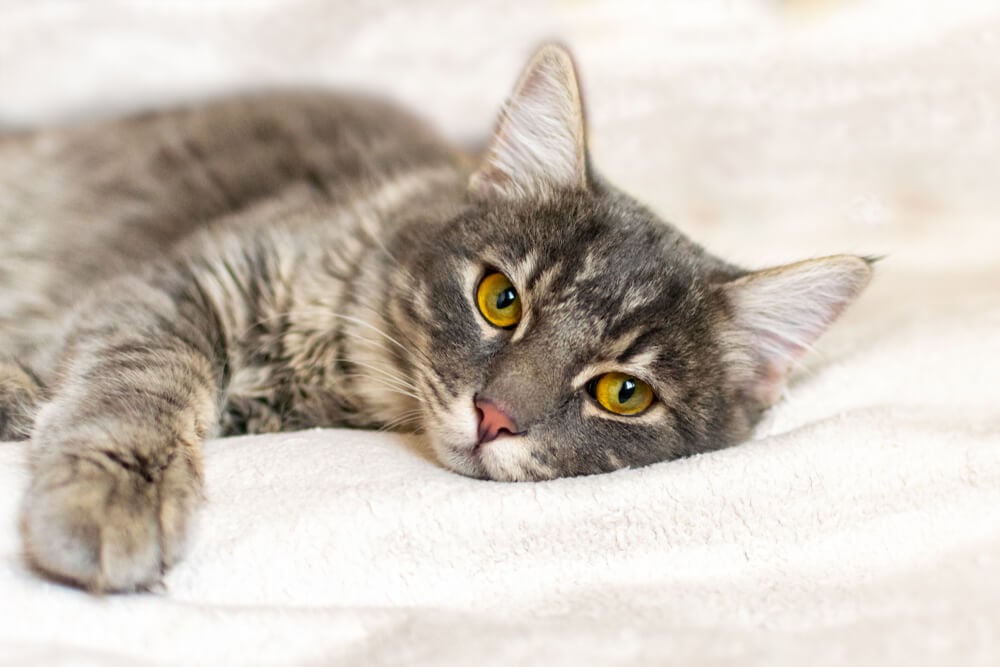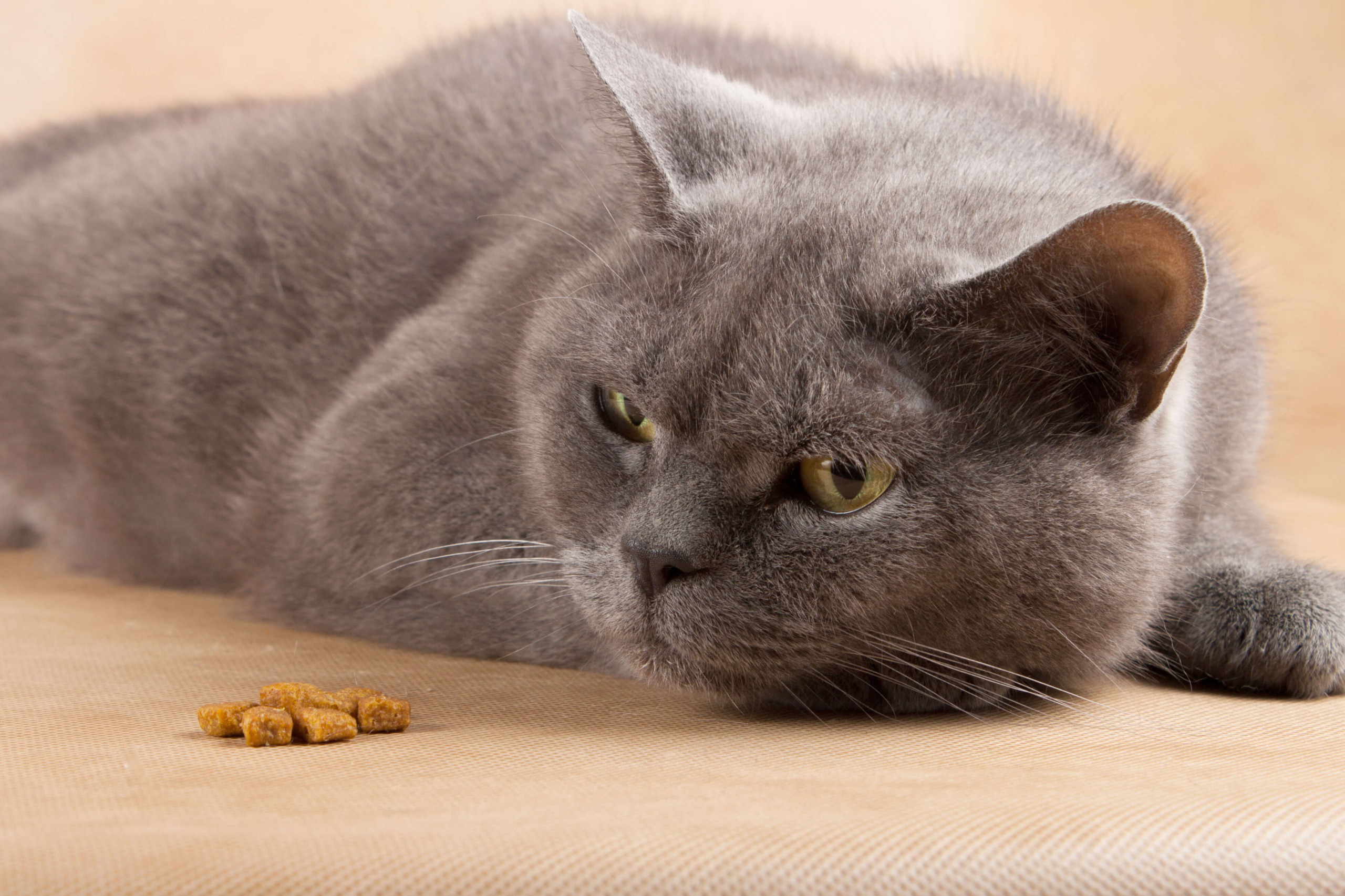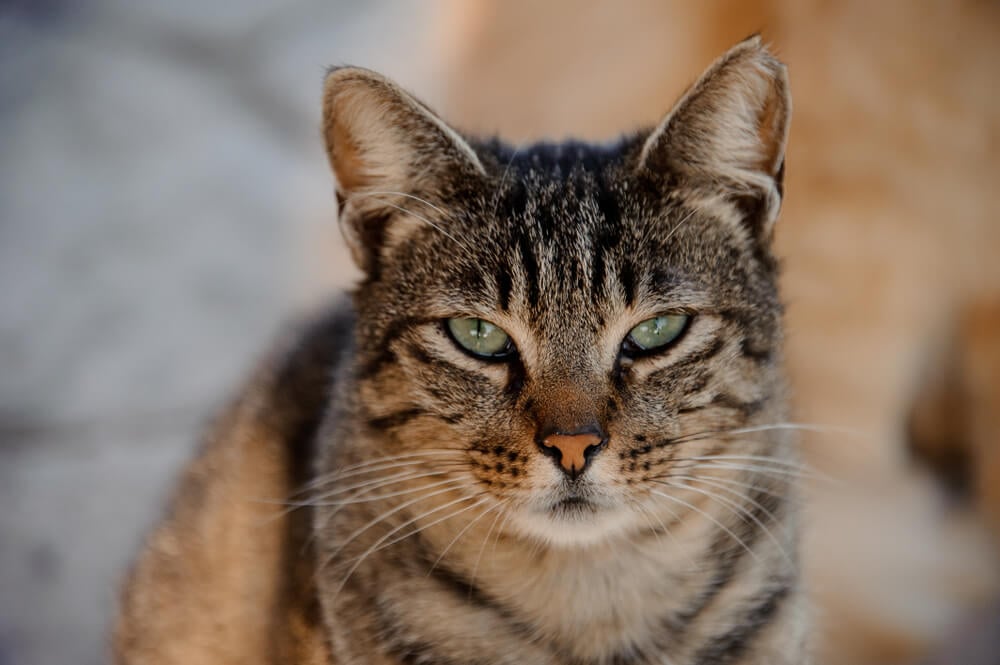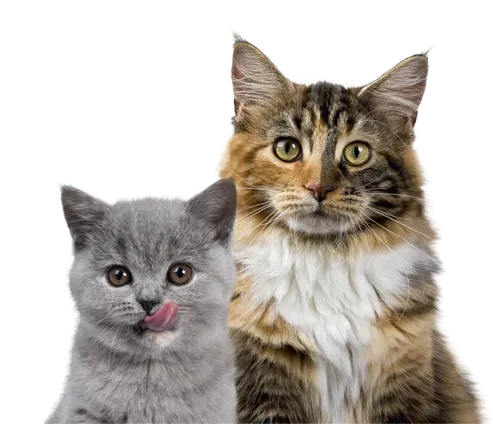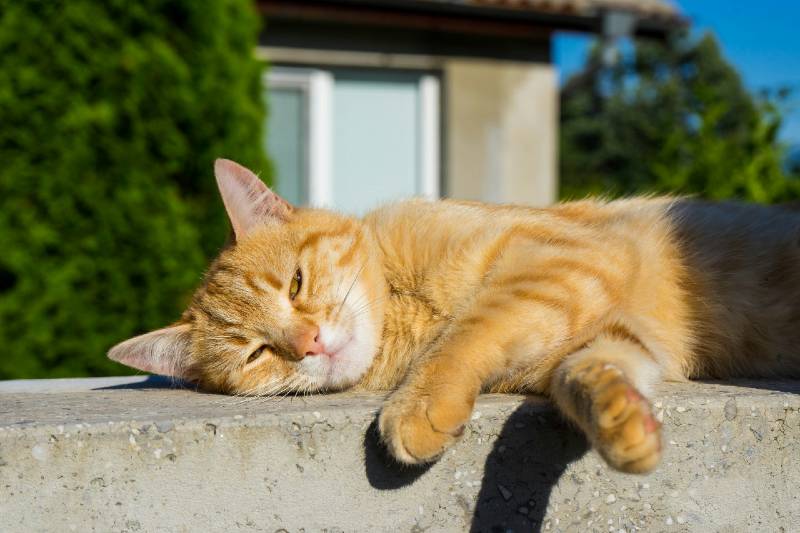
As humans, we’re acutely aware of the dangers of the sun. From sunburn to skin cancer, that gigantic ball of fire in the sky can cause serious damage if we’re not careful.
For our feline friends, it can be even more dangerous. As most are covered in a layer of fur — some much thicker than others — it can mean their temperature rises rapidly in direct sunlight. As a result, they’re at high risk of the effects of the sun, including heatstroke.
So knowing the signs of heatstroke in cats is crucial for all cat parents: if you see any of them, you have the knowledge to act quickly and help your cat before they become seriously ill.
What is heatstroke in cats?
Heatstroke in cats occurs when their body temperature reaches dangerously high levels.
A cat’s normal body temperature is between 100.5°F and 102.5°F (38.1°C-39.2°C). This can go higher if they’re suffering from an illness that gives them a fever.
However, if their temperature reaches above 104°F (40°C), it’s a sign they’re suffering from heatstroke. This can lead to dehydration, seizures, organ damage and, in severe cases, death.
What are the signs of heatstroke in cats?
Signs and symptoms that your cat might be suffering from heatstroke include:
- Confusion
- Drooling
- Panting
- Bright red or pale gums
- Increased heart rate
- Seizures
- Lethargy
- Vomiting and diarrhea
If you suspect your cat is suffering from heatstroke, it’s an emergency, and you should seek help and advice from your vet immediately.
How do you avoid your cat getting heatstroke?
Cats are sun-worshippers — they love nothing more than to find a warm place, stretch out and soak in the warmth for hours. Your cat can’t sweat (except through their paw pads), so to cool themselves down they either lick themselves or seek shade when they become too hot. They don’t often build up too much heat due to exercise or overexertion, so usually the causes of heatstroke in cats is a result of being shut in a warm building such as a greenhouse or conservatory for too long and then overheating, so ensure you never shut them in rooms that get hot — this includes vehicles, which can also be lethal for cats on hot days.
Ensure your cat always has access to fresh water, especially during heatwaves, and feeding them wet food will increase their moisture intake. Ensure they always have a shady spot in which to cool down, and keep your house well-ventilated when the heat rises, using fans, air-conditioning or open windows to get a cooling breeze blowing. Also, avoid taking them in the car when temperatures are high.
Something else to be aware of is your cat’s weight — if your cat is overweight or obese, they are more susceptible to heatstroke. Also, flat-faced breeds such as Persian, Himalayan or Burmese cats are at higher risk, as are younger and older cats.
The key thing to remember is to keep an eye on them in hot weather, try to keep them indoors in a well-ventilated room where possible, ensure you don’t accidentally shut them in a room, and don’t take them in the car unless absolutely necessary.
What should you do if you think your cat has heatstroke?
The first thing is to try to cool them down. Try to get them to drink water (don’t force them, though) and cool them down with ice packs and fans. Whether you think the heatstroke is mild or severe, you should aim to get your cat to the vet as a priority. Your vet will then assess the severity of the situation and may put your cat on a fluid drip.
They may also need blood and urine tests if they’ve suffered severe heatstroke and dehydration. They may have to stay in and be monitored for a few days to ensure they’re ok.
We uphold the highest editorial standards when creating the authoritative content pet parents rely on and trust.
Every piece of clinical content on the Cat Food Advisor is reviewed by our certified Veterinary Advisory Board, which consists of licensed veterinarians and medically certified specialists.
Our reviews are completely independent; we are not paid by any pet food company to promote their products favorably. We do not accept money, gifts, samples or other incentives in exchange for special consideration. For more information see our Disclaimer & Disclosure page.



